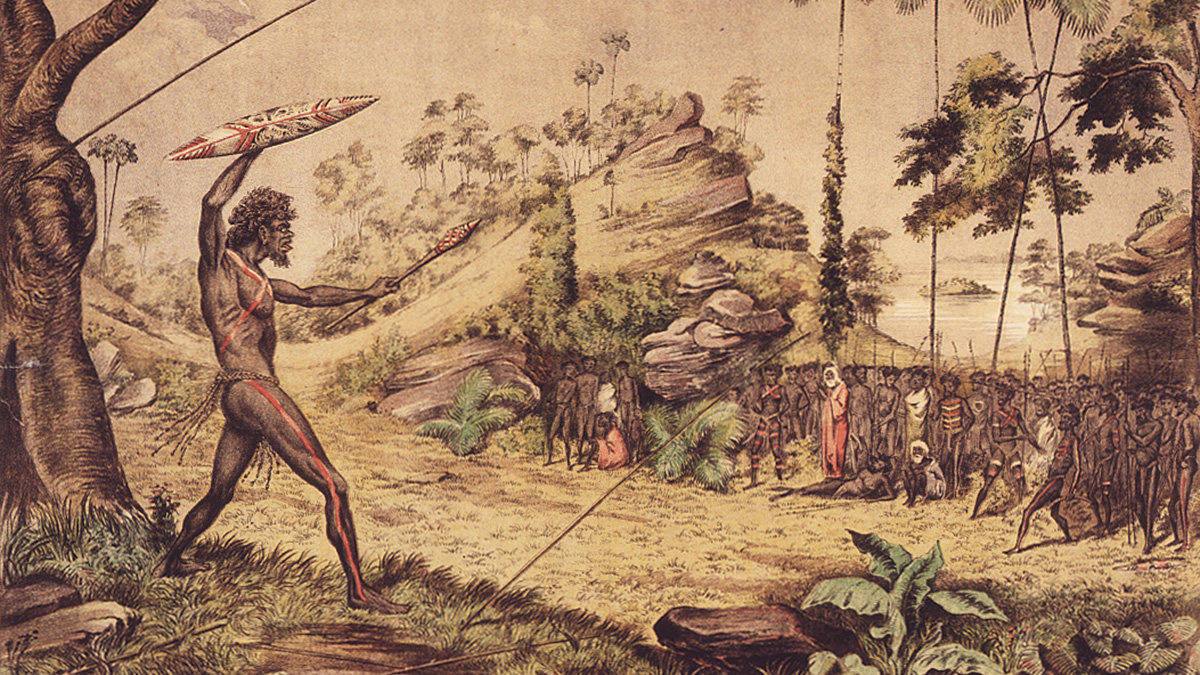It’s not for nothing that former prime minister John Howard took umbrage at what he called “the black armband view” of Australian history. While its fans would argue that it is a necessary correction to a “three cheers” worldview, the prevailing history narrative for the “intelligentsia” is little more than a sustained sneer, leavened heavily with the old, virulent hatred of the West that’s almost compulsory for leftist academics (a tautology, in this day and age).
The disdain of the chattering classes for their country (as Orwell noted, “an unfaked emotion”) is exceeded only by their determination to re-write its history as nothing more than blood-soaked racism. One of the articles of faith of the black armband history is that of an Australian “genocide”.
But, while the sometimes appalling treatment of Aboriginal Australians over at least two centuries is beyond dispute, the evidence for an actual “genocide” is decidedly thin (not least that it was clearly spectacularly unsuccessful: there are probably more people at least claiming to be Aboriginal alive today than in 1788).
So, as the left will do, when it comes to history, they’re simply making it up.
The University of Newcastle’s “Massacre Map”, first published in 2017, makes Michael Mann’s “hockey stick” look like a work of sober academic rigour. It’s perhaps slightly less fanciful than Bruce Pascoe’s Dark Emu — and just as resistant to honest reappraisal in the face of criticism.
Historian Michael Connor lodged a complaint with the University, alleging “extensive academic plagiarism”. The response of the university is, Connor says, a “gloriously demented” cover-up. Plagiarisms, he says, have been replaced by other plagiarisms, plagiarisms have been turned into quotations, “footnotes have been fabricated”, transcriptions mangled and writings of historians — including Connor himself — misrepresented.
I was often in disbelief at what I was looking at. Last year I wrote of a sampling of material from the Massacre Map which is possibly the most serious case of academic plagiarism in the history of our universities. Now the situation is even graver.
A few samples will suffice to illustrate the overall problem.
Barmah Lake. In the earlier version half the massacre narrative was plagiarised from Michael Cannon’s Who Killed the Koories? The new version does not mention Cannon and is largely based on citations from Edward M. Curr’s Recollections of Squatting in Victoria—supposedly. That the academics give the wrong year of publication for Curr’s book, 1889 instead of 1883, is a minor problem. That the references are fake is a major problem—almost unbelievable coming from a project directed by Lyndall Ryan who herself had some serious footnote problems to explain some years ago. The direct quotes from Curr in this massacre narrative are fabrications. Although they begin, “According to Curr” and “Curr continues”, neither of them are from his book. The voice is Michael Cannon, his words again plagiarised from Who Killed the Koories?
Furthermore, the Barmah Lake narrative is incomprehensible. The first section, plagiarised as noted above, suggests an event but does not show any real violence or reveal a single Aboriginal death. The second part of the new narrative uses material, produced as “evidence” to comment on the first section, which is discussing a completely different confrontation which happened much later in the same year. From this confusion the Massacre Map extracts a massacre death toll of twenty-six from the later irrelevant document.
Then there is the supposed Connell’s Ford massacre, for which the Map relies on a “detailed account” in a “book” that is actually just 15 unbound pages printed in 1960. The author, ER Trangmar, comes across as only slightly more fanciful than Bruce Pascoe:
Mr Trangmar talked of Aboriginal telepathy, seems to support the idea that “our aborigines originally came from India”, and told the story, unfortunately mythical, of Essomerit—“the first recorded aborigine to visit any part of Europe”.
Then there is the Map’s account of a “massacre” that simply never happened: Murderers Flat.
Based on a supposed oral history of a woman “born in 1849 as remembered and retold by her granddaughter”. Except that the best evidence indicates that she was born somewhere between 1855 and 1859, and her brother in 1860.
This is important because the Massacre Map dates the event she supposedly witnessed as happening between “1 Jan 1850 and 12 Jan 1855”—some years before either of the siblings were born. The Map academics had not conducted the most simple of online checks into the information they took from Scars in the Landscape—which itself presents an utterly tangled narrative.
Quadrant Online
The problem with such academic chicanery as this is that, simply by virtue of being published in the first place — so much for the vaunted “peer review” system — it becomes a self-perpetuating narrative. As Connor points out, the Massacre Map repeatedly cites Ian Clark’s 1995 Scars in the Landscape, itself “replete with errors and plagiarisms”. Without a doubt, students over the last few years have been eagerly citing the Massacre Map.
As with Bruce Pascoe’s Dark Emu, the fact that the supposed gatekeepers refuse to admit when they were not just wrong, but willingly hoodwinked, casts academia as a whole into disrepute. When those who are supposed to defend the truth collude with liars and frauds, everyone is worse off. What hope is there for a “reconciled” Australia, when a great deal of the country fervently believes in plain falsehoods?
Please share this article so that others can discover The BFD

